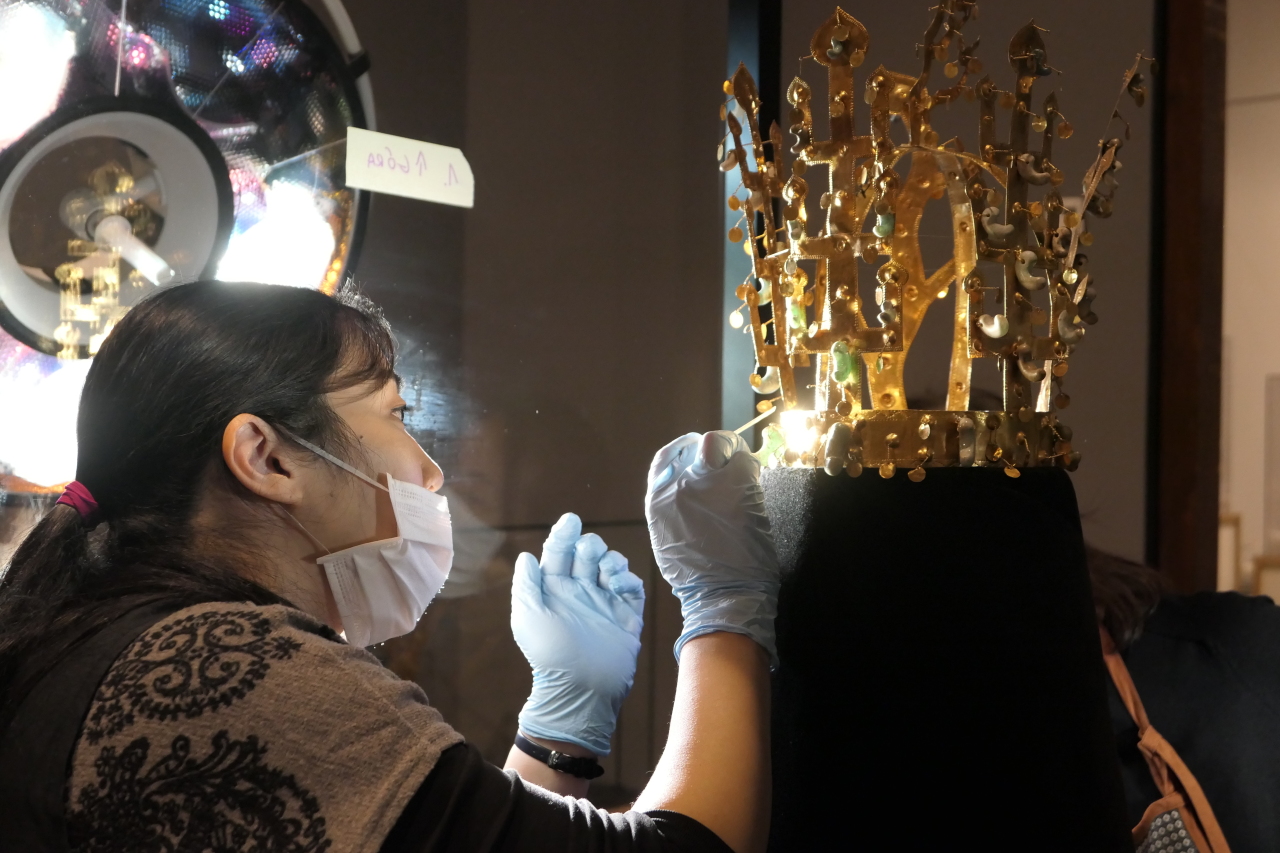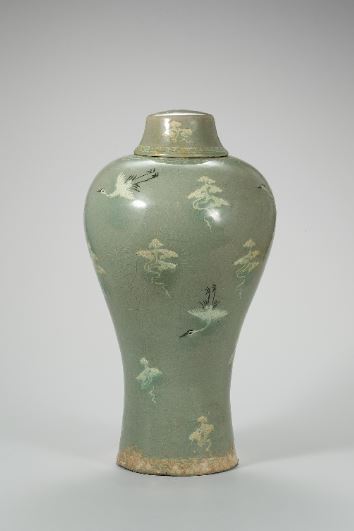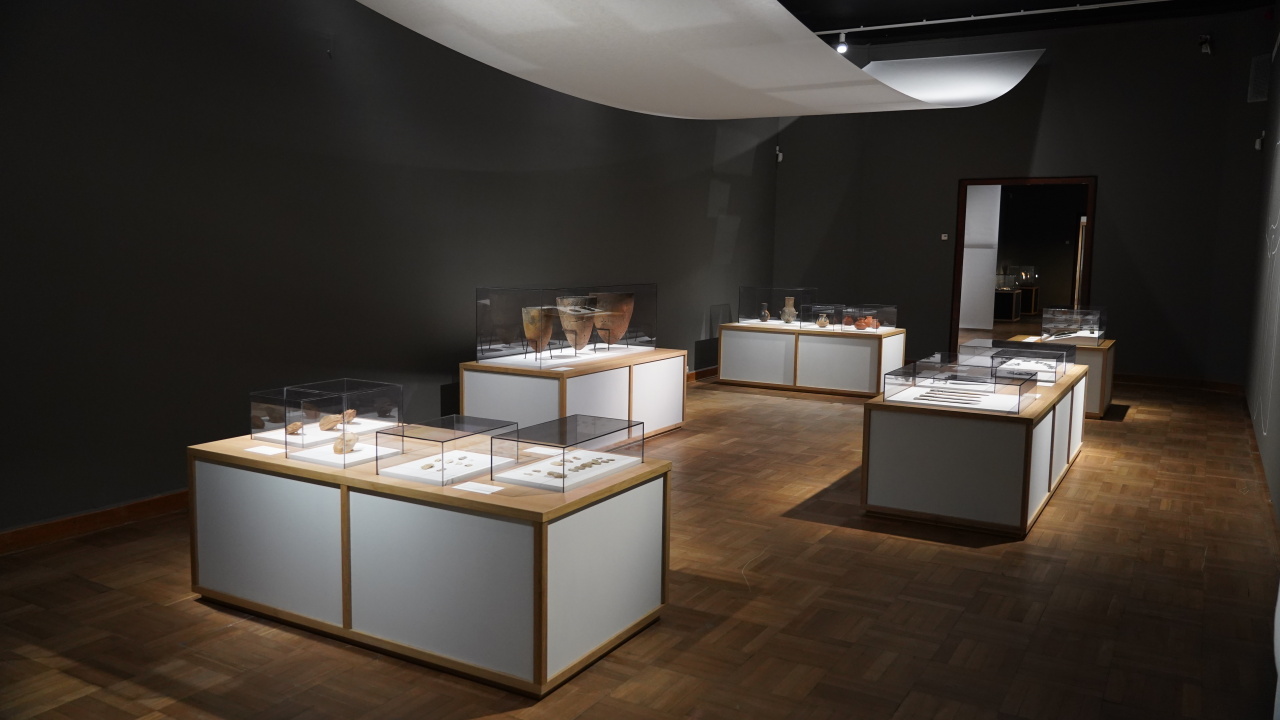The exhibition “Splendor and Finesse: Spirit and Substance in Korean Art” is a special one for Yang Seung-mee, the National Museum of Korea curator who put it together. This is the first large-scale exhibition of Korean art in Eastern Europe.
The exhibition, which opened at the National Museum in Warsaw on Oct. 11 and runs until Jan. 12, features 391 artifacts from five stages of Korean history: prehistory, the Three Kingdoms (57 BC-AD 668), Unified Silla (668-918), Goryeo (918-1392) and Joseon (1392-1910).
“This kind of exhibition is very meaningful because when you learn about a certain country, you may start seeing the beginning of the country and the rise and fall of each kingdom or dynasty,” she said.
 |
Curator Yang Seung-mee sets up a sixth-century gold crown from the Silla Kingdom at the National Museum in Warsaw, in the Polish capital. (National Museum of Korea) |
The exhibition was organized to mark the 30th anniversary of ties between South Korea and Poland this year. It also reciprocates the Polish art exhibition held at the National Museum of Korea four years ago.
The highlight of the exhibition in Poland is porcelain, especially Goryeo celadon.
Yang said museum officials from Poland showed great interest in Korean porcelain. Among the seven exhibition rooms, two are dedicated exclusively to 35 celadon items from the Goryeo Dynasty.
“At first, we considered not including some celadon (items) because we assumed that there wouldn’t be space for so many. But the museum officials from Poland offered to set up separate rooms for celadon,” Yang said. “I later learned that Poland is also famous for porcelain.”
 |
A “maebyeong” (plum bottle) with an inlaid cloud and crane design, from the Goryeo Kingdom (National Museum of Korea) |
In addition to porcelain, Yang regards the sixth-century gold crown and ornaments from the Silla Kingdom as representative Korean relics. They are on view in the main area of the exhibition space.
When curators start planning an exhibition, they first draw up a list of relics to exhibit. If the relics are already on display at museums as part of permanent exhibitions, the curators consult with the exhibition departments at those museums. Otherwise, they inspect the museums’ artifact storage areas and examine each artifact carefully, Yang said.
While going through the vault of the National Museum of Korea to select artifacts, Yang spotted a 2.8-centimeter-long ornament from the Goryeo Dynasty. Impressed by its beauty, she did not hesitate to put it on the list of exhibits.
“It was so beautiful that I had to come up with a creative way to (help visitors see the details up close) because it was relatively small,” Yang said.
So she made use of “digital magnifying glasses” so people could zoom in on the ornaments, which appear on tablet screens as two- or three-dimensional images. “Digital methods are very effective and you can be creative with them because (there are no limits),” she said.
Eleven pairs of gold ornaments are on display.
Goguryeo mural tombs, an important remnant of Korean history located in North Korea, are shown in a seven-minute film that presents mural tombs from early, middle and late Goguryeo.
 |
Prehistoric relics are on display at “Splendor and Finesse: Spirit and Substance in Korean Art,” currently running at the National Museum in Warsaw, in the Polish capital. (National Museum of Korea) |
Sometimes exhibition venues limit what can be displayed. As part of the show, Yang sought to include relics of Unified Silla, where Buddhist culture flourished and Buddhism became the state religion. Yang planned to show an 886-kilogram Buddha statue, but her plan fell through.
“The statue of Buddha was really beautiful, but it turned out that the exhibition site for the statue was the second floor of the museum, where the ceiling could bear up to 300 kilograms,” Yang said. “So we had to change the main artifact for the Unified Silla era to the gilt-bronze Buddha Triad Plaque. … I am still wistful about it.”
As an organizer of exhibitions in different counties, Yang’s experiences have given her some insight into foreign perceptions of Korean art. A meeting she attended to discuss the interior design for the exhibition in Poland was one of those moments, she said.
“The designer from Poland suggested achromatic colors for interior design at first, so we explained Koreans love colors such as ‘dancheong,’ and later the interior design for the Joseon Dynasty was changed to red,” she said. “It is a huge task as a curator to think of how to present the identity of Korean culture well in discussions with counterparts from foreign museums.”
She also said a support system was needed at the national level to better promote Korean culture in foreign countries.
“When we organize an exhibition, we talk to an embassy and Korean cultural institutes located there to create synergy, but communication doesn’t go well sometimes,” she said. “For example, hosting multiple Korean cultural events around the same time when an exhibition (of Korean artifacts) is going on is a good way to attract more people to the exhibition.
“South Korea is well-known for K-pop acts such as BTS, but I think it is exhibitions that play a role in expanding people’s interest to the cultural sphere,” Yang said.
By Park Yuna (
yunapark@heraldcorp.com)







![[Herald Interview] 'Trump will use tariffs as first line of defense for American manufacturing'](http://res.heraldm.com/phpwas/restmb_idxmake.php?idx=644&simg=/content/image/2024/11/26/20241126050017_0.jpg)


